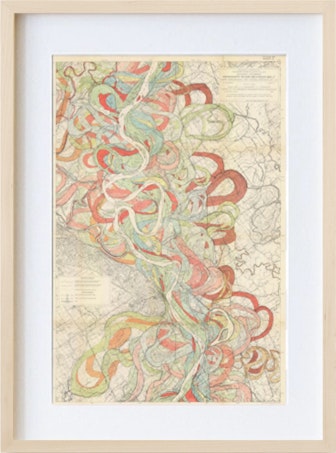
Glossary of Censored Words from a 1919 Treatise on Love
The use of Latin to conceal or encode sexually charged or controversial language has a long history (see, for example, our essay on Emmanuel Swedenborg’s erotic dreams). As one might expect, a no-nonsense 458-page treatise on the "science of sex-attraction" would present plenty of opportunity for such Latinate veiling and Bernard S. Talmey’s Love does not disappoint. In fact, so replete with Latin substitutions is the work (particularly in the sections on "pathological activities") that in its second edition Tolmey was urged to include some help for the persistent and curious reader who might not be so proficient in Latin. Enter a most unusual bilingual glossary. Ranging from the familiar (cunnilingus, fellatio, libido), to the expected (sugo for “suck”, lambo for “lick”, fricare for “rub”), to the distinctly worrisome (gallina for “hen”, canis for dog), to the plain intriguing (nono quoque die for "every nine days"), the list gives a fairly good sense of what’s to come in Talmey’s study of the varieties of human sexual experience.
A gynecologist at Yorkville Hospital in New York City, Talmey (1862–1926) published three books on sexuality before the appearance of Love, which served as a sort of summa. He was particularly interested in if, and how, male and female sexuality differed. This interest led him to research and write an early paper on the psychology of transvestites as well as to consider at length what we would now call gender nonconformity — what Talmey called anima muliebris in corpore virili inclusa (a female soul in a male body), or vice versa. With such a career-long dedication to discussing and thinking about sex, Talmey was not one to shy away from speaking directly on the matter, and (as he writes in his preface) the pervasive use of Latin in his book was dictated not by “prudery” but “as a protection against the criticism of those who would take umbrage to plain sex expression”:
For the impure everything is impure. Fortunately such people’s knowledge of Latin is, as a rule, very slight, and for them this treatise will remain a sealed book. Physicians and lawyers for whom this book was written know enough Latin grammar, enabling them to apprehend the meaning of all those phrases necessary for the understanding of the main points of the treatise.
There is a good deal the prudish of 1919 would have been aghast to see in print that strikes a modern reader as rather tame. However, Talmey’s accounts of sexual abuse and bestiality — copulation with geese, hens, and dogs — remain eternally disturbing, even with their learned Latin camouflage:
The girl, a domestic servant, was always moral before her illness. When she began suffering from hysterical attacks, amato liberos in fidem suam commissos exhibebat ad constuprandum et noctu spectatores rerum turpium eos faciebat, while the whole household was asleep under the influence of narcotics. When she was discovered and driven out of the house, the formerly modest girl became shameless and finally meretricium fecit.
And elsewhere:
Rosse reports the case of a young white, unmarried woman in Washington who was surprised in flagrante delicto with a large English mastiff, who in his efforts se solvere a puella caused an injury of such a nature that she died from hemorrhage within an hour.
This is the dark side of Love. There are also many lighter, more enlivening passages in this book promoting “sex enlightenment” and “sex discussion”. As Talmey conducts us through his history (often dated, sometimes upsetting, but never dull) of sexuality, he points out a number of interesting sights, drawing on everything from the Bible to Darwin.
Talmey’s way of talking about sexual matters might also spice up our own vocabulary. The Latin words he lists may have been intended to conceal their meaning from a prudish public, but in their labials and plosives and plurality of vowels they remain strangely alluring — sexy if you will, or lovely if you’d rather.
Feb 13, 2020






